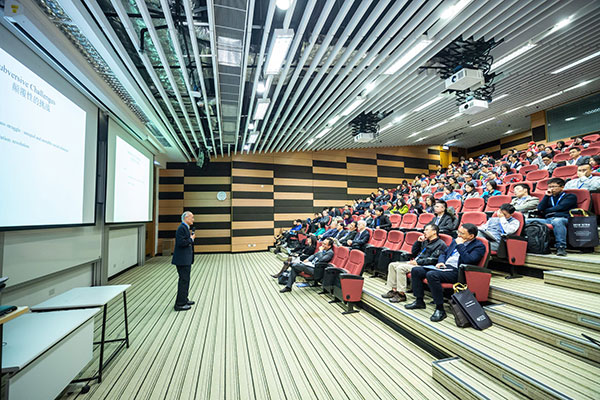
Our people make our company great.
It’s common to hear this phrase from CEOs, HR directors, and just about anybody from an organization who’s looking to explain why their company is successful. And if the pandemic has taught us anything, it’s more important than ever to care for employee’s mental and physical well-being. After all, if companies want to attract the best and the brightest, they need to dangle more than just a nice paycheck.
Today’s employees want the paycheck, affordable healthcare, high-quality benefits and perks, but they also want so much more. They want a company whose values align with theirs, mentorship and advancement opportunities, and a good work-life balance to name a few. Most organizations recognize this. And while organization leaders tend to prioritize employee well-being much lower than employees, most leaders agree that their employee’s happiness is important to company success; happy employees are more productive, thus making firms more profitable.
That’s what makes employee experience so vital to meeting organizational goals. Developing a positive experience in all facets of an employee’s time at work needs should be a central focus for organizations looking to boost the bottom line and other organizational metrics.
That said, building a quality employee experience takes time, and there are many things to consider. We’ve put together this brief guide to help HR pros focus on the most important things to concentrate on when developing an amazing employee experience.
What Is Employee Experience?
Despite being difficult to perfect, employee experience is surprisingly easy to define. Quite simply, it’s the totality of how employees experience a company from their first interaction to their last. That includes how resumes and applications are submitted, to onboarding, to ongoing coaching and career development, to the employee’s exit interview when they choose to leave.
Define and Live Your Values
Employee experience starts and ends with an organizations’ values. These might seem like simple corporate fluff, but they’re actually a key ingredient to building a great experience for workers. An organization’s values expressly state what the organization believes in, specifically in terms of how the company engages both external and internal stakeholders. They tie into the role the organization plays in customers’ lives, but also the larger communities to which the organization belongs, be they geographic, professional, etc.
Of course, it’s not enough for an organization to simply say what their values are. It’s essential for them to live them. That is, values should be a set of guiding principles by which an organization behaves, as well as those who work there. An organization should also serve as an example of its values. For example, if one value is to be good stewards of the Earth, then an organization can demonstrate that by creating eco-friendly programs such as remote work, adopt a highway, or community clean up events.
Develop Employee-centric Policies and Processes
Businesses spend a lot of time thinking about customer experiences in terms of how a customer experiences the brand—on their website, on their social media channels, in person, etc. This usually involves talking to a lot of customers to better understand their needs and finding ways for the business’s products and/or services to fulfill them. This often includes conducting user interface experiments, surveys, focus groups, and other means of collecting feedback, and then experimenting with interactions to optimize the customer relationship.
A similar approach should be taken with employees. That could be developing regular surveys and conducting focus groups, but it should also include developing processes that are easy to use. For example, making it easy to request—and get approved for—paid time off should be as flexible, fluid, and intuitive the same way you might use AirBnB to book a vacation home.
More importantly, though, firms should spend time assessing their entire set of workplace policies to ensure that they are sufficiently employee-centric. If a policy seems one-sided, it should be examined in greater detail to try to make it more employee-friendly. This might include reviewing work from home policies, paid time off, maternity and paternity leave, etc., but it can also include developing new policies that work to make employees feel welcomed and cared for.
Foster Community
If a company wants its employees to think of their employer as more than just a place to go to pick up a paycheck, they’re going to need to develop a sense of community. By that, we mean creating an atmosphere where all employees feel like they belong and that they are contributing to something. A sense of community can be focused on the organization as a whole, but smaller sub-communities within the organization can also become useful gateways for employees to build stronger bonds with the organization.
Communities can be a place where employees share new ideas, ask for help, collaborate, and learn from peers and mentors. They can be formed around both personal and professional common interests, organizational function or role, activities, topics of interest, etc.
Unfortunately, some firms are opposed to this approach, concerned that employees will organize or behave in a way that’s detrimental to achieving organizational goals. However, those fears are generally unfounded. Firms need to take a “we” approach, that is managers should be actively participating in organizational communities. Not only will this help firms keep their finger on the pulse of what employees are thinking and feeling, but it will help to break down the barriers between workers and managers by giving them an opportunity to appreciate each other as human beings.
Ultimately, the better the employee experience is in an organization, the more likely they will stay and have a positive impact on business outcomes. Firms that truly embrace their employees will find it easier over time to attract and retain top talent, while firms that fail to create an employee-centric culture will find it more difficult, leading to higher turnover rates and more expensive hiring processes.



